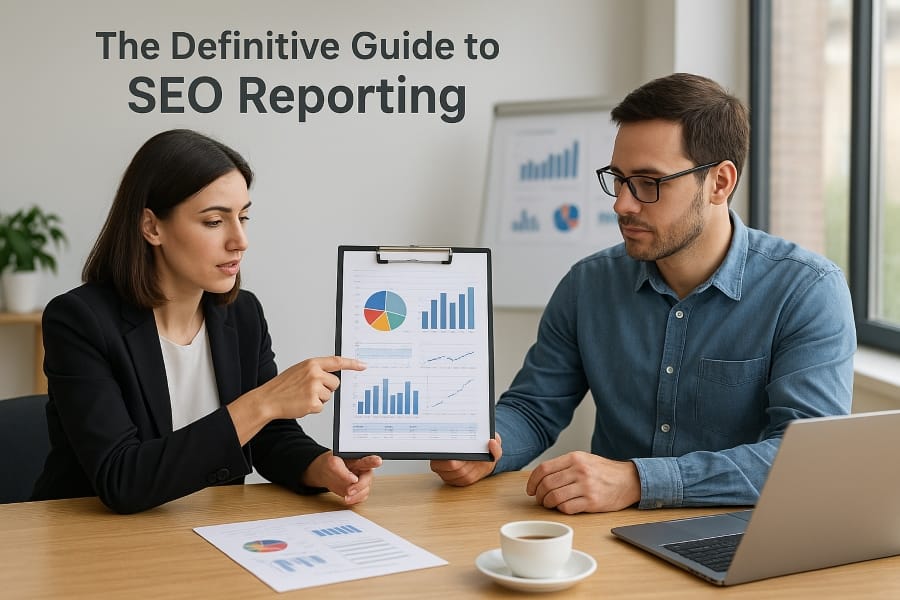In today’s digital landscape, having a mobile-friendly WordPress website is essential for reaching and engaging a broader audience. With an increasing number of users accessing the internet on their mobile devices, ensuring your website looks and performs well on smartphones and tablets is crucial. In this comprehensive guide, we will walk you through the step-by-step process of creating a mobile-friendly WordPress website that delivers a seamless user experience across all devices.
Table of Contents
I. Understanding Mobile-Friendly WordPress Websites
A. The Significance of Mobile-Friendly Website
1. Mobile Usage Statistics
Mobile internet usage has been on a steady rise over the years, and today, a significant portion of internet traffic comes from mobile devices. According to research, more than half of all website visits occur on mobile phones and tablets. Neglecting mobile users can lead to a loss of potential visitors and customers.
2. Google’s Mobile-First Indexing
Google now prioritizes mobile versions of websites in its search index. This means that a mobile-friendly website is more likely to rank higher in search results than a non-mobile-friendly site. To maintain or improve your search engine rankings, creating a mobile-friendly WordPress website is essential.
B. The Power of WordPress for Mobile Sites
1. Benefits of Using WordPress
WordPress is a popular and user-friendly content management system (CMS) that powers a significant portion of websites on the internet. It offers a wide range of themes, plugins, and customization options that make it easy to create and maintain a mobile-friendly website.
2. Mobile Responsiveness in WordPress Themes
Many modern WordPress themes are built with responsive design principles, which automatically adapt the website’s layout and elements to fit different screen sizes. Choosing a responsive theme is the first step towards creating a mobile-friendly WordPress website.
II. Selecting a Mobile-Friendly WordPress Theme
A. Responsive Design Themes
1. Importance of Responsive Themes
Responsive themes are designed to respond to the user’s device, ensuring that the website looks and functions optimally on various screen sizes, including desktops, tablets, and smartphones. They eliminate the need for separate mobile and desktop versions of your website.
2. Recommended Responsive Theme Providers
There are numerous reputable theme providers that offer a wide selection of responsive WordPress themes. Some popular options include ThemeForest, Elegant Themes, StudioPress, and GeneratePress.
B. Testing Theme Mobile Responsiveness
1. Using Google’s Mobile-Friendly Test
Google’s Mobile-Friendly Test is a free tool that allows you to check if your chosen WordPress theme is mobile-friendly. Simply enter your website’s URL, and the tool will analyze its mobile responsiveness, providing feedback and suggestions for improvement.
2. Manual Theme Testing on Different Devices
Apart from using automated tools, manually testing your website on various devices is crucial. Ensure that your website looks well on smartphones, tablets, and different screen orientations (landscape and portrait).
III. Mobile Plugins for WordPress
A. The Role of Plugins in Mobile Optimization
1. Popular Mobile Plugins Overview
WordPress offers a plethora of plugins specifically designed to enhance mobile optimization. These plugins can improve your site’s performance, appearance, and user experience on mobile devices.
2. Essential Mobile Plugins to Consider
WPtouch: This plugin creates a mobile-friendly version of your website, providing a user-friendly interface for mobile visitors.
AMP for WordPress: Accelerated Mobile Pages (AMP) is a Google-backed project that helps your pages load faster on mobile devices.
B. Installing and Configuring Mobile Plugins
1. Step-by-Step Plugin Installation
To install a WordPress plugin, log in to your WordPress dashboard, go to “Plugins” > “Add New,” search for the desired plugin, and click “Install” and then “Activate” after installation.
2. Customizing Mobile Plugin Settings
After installing the mobile plugins, configure their settings according to your preferences. For instance, WPtouch allows you to customize the appearance of your mobile site, while AMP for WordPress offers various customization options for your AMP pages.
IV. Optimizing Content for Mobile Devices
A. Simplifying Website Navigation
1. User-Friendly Menus for Mobile
Implement a clean and intuitive menu structure that is easy to navigate on small screens. Consider using a collapsible menu (hamburger menu) to save space and display menu items upon user request.
2. Implementing Mobile-Friendly Navigation Patterns
Utilize thumb-friendly buttons and links that are easy to tap on mobile devices. Ensure that the user can access essential pages and content with minimal effort.
B. Formatting Content for Mobile Readability
1. Readable Font Styles and Sizes
Choose legible font styles and sizes that are easily readable on mobile devices. Sans-serif fonts tend to be more readable on small screens.
2. Creating Scannable Content with Headings and Bullet Points
Break up long paragraphs with clear headings and subheadings. Use bullet points to present information concisely and improve readability on mobile screens.
C. Handling Images and Media
1. Compressing Images for Mobile
Use image optimization plugins or tools to compress images without compromising quality. This reduces loading times on mobile devices, where bandwidth may be limited.
2. Choosing Mobile-Compatible Media Formats
Ensure that your videos and other media elements are compatible with mobile devices. Consider using HTML5 video and audio tags instead of Flash-based alternatives, which may not be supported on all mobile platforms.
D. Streamlining Forms for Mobile Users
1. Reducing Form Fields
Minimize the number of required fields in your forms to make the submission process quicker and more user-friendly on mobile devices.
2. Utilizing Mobile Form Plugins
Implement mobile form plugins that are optimized for touch interactions and can automatically detect and adjust to different screen sizes.
V. Mobile Website Performance Optimization
A. Website Speed Matters
1. Impact of Mobile Speed on User Experience
Mobile users have limited patience for slow-loading websites. A faster website results in a better user experience and increased engagement.
2. Tools for Measuring Mobile Page Speed
Use tools like Google PageSpeed Insights and GTmetrix to analyze your website’s mobile performance and receive recommendations for improvement.
B. Caching for Mobile Sites
1. Utilizing Caching Plugins
Caching plugins store static versions of your website’s pages, reducing server requests and load times for returning visitors.
2. Configuring Caching for Mobile Users
Configure your caching plugin to work efficiently on mobile devices and take advantage of browser caching to enhance load times for users on the go.
C. Reducing HTTP Requests
1. Optimizing CSS and JavaScript
Minimize CSS and JavaScript files to reduce the number of HTTP requests made by the browser, which can significantly speed up page loading times on mobile devices.
2. Implementing Image Sprites
Combine multiple small images into a single image sprite to reduce the number of individual image requests, leading to faster loading times on mobile devices.
VI. Testing Mobile-Friendly WordPress Websites
A. Mobile Testing Tools and Emulators
1. Using Online Emulators
Online emulators like BrowserStack and CrossBrowserTesting allow you to test your website on virtual mobile devices to identify and fix compatibility issues.
2. Browser Developer Tools for Mobile Testing
Most modern web browsers come with built-in developer tools that allow you to simulate mobile devices. You can access these tools by pressing F12 or right-clicking on the page and selecting “Inspect.”
B. Real Device Testing
1. The Importance of Testing on Physical Devices
While emulators are useful, testing your website on real mobile devices is crucial for accurate assessments of its mobile-friendliness. Physical devices may have different capabilities and performance levels.
2. Mobile Testing Labs and Services
Consider using mobile testing labs or services that provide access to a wide range of physical devices for testing purposes. These services ensure comprehensive testing across different devices and operating systems.
VII. Mobile SEO for WordPress Websites
A. Google’s Mobile-Friendly Test
1. Evaluating Your Website’s Mobile Friendliness
Use Google’s Mobile-Friendly Test to determine if your website meets Google’s mobile optimization criteria. The tool will analyze your site and display a pass or fail result along with any issues that need attention.
2. Fixing Mobile Usability Issues
Address any mobile usability issues highlighted by the test to improve your website’s mobile-friendliness. Common issues include font size readability, viewport configuration, and content spacing.
B. Mobile Sitemaps and SEO Plugins
1. Generating Mobile XML Sitemaps
Create separate XML sitemaps for your mobile pages to help search engines index your mobile content accurately. WordPress SEO plugins like Rank Math can assist in generating these sitemaps.
2. Using SEO Plugins to Enhance Mobile SEO
Optimize your mobile SEO further by utilizing plugins like Rank Math, which can help you optimize meta tags, titles, and descriptions specifically for mobile search results.
VIII. Tracking and Analyzing Mobile Users
A. Utilizing Google Analytics for Mobile
1. Setting Up Mobile Analytics
Make sure you’ve set up Google Analytics for your website, and check that it tracks mobile visitors. This will give you valuable insights into how users interact with your mobile content.
2. Analyzing User Behavior on Mobile
Use Google Analytics reports assessing user behavior on mobile devices, including bounce rates, session duration, and conversion rates. Identify areas for improvement and focus on enhancing the user experience.
B. Understanding Mobile User Feedback
1. Collecting User Feedback on the Mobile Experience
Gather feedback from your mobile users through surveys, polls, or feedback forms. Understanding their needs and pain points will help you make informed decisions for site improvement.
2. Addressing Mobile User Concerns
Act on the feedback received to address any issues or concerns users may have about the mobile experience. Prioritize changes that enhance mobile usability and satisfaction.
Building a Mobile-Friendly WordPress Site: A Necessity in Today’s Market
In today’s mobile-centric world, creating a mobile-friendly WordPress website is essential for any business aiming to thrive online. By prioritizing mobile optimization, selecting responsive themes, incorporating mobile plugins, and fine-tuning content and performance, you ensure a seamless experience across all devices. Regularly testing your site on emulators and real devices helps maintain consistency, while monitoring mobile SEO and analytics keeps you on track with performance and user engagement.
Elevate Your Mobile Presence with HITS Web SEO Write’s Expert Services
A mobile-optimized WordPress site doesn’t just enhance user satisfaction but boosts search rankings increases traffic, and drives higher engagement. At HITS Web SEO Write, we specialize in building mobile-friendly WordPress websites tailored to your audience’s needs, all at reasonable rates. By embracing best practices and expert strategies, we’ll help you create a WordPress site that’s accessible and appealing, whether your users are on desktops, smartphones, or tablets. Position your brand for success in the digital landscape with our comprehensive mobile-friendly solutions.




